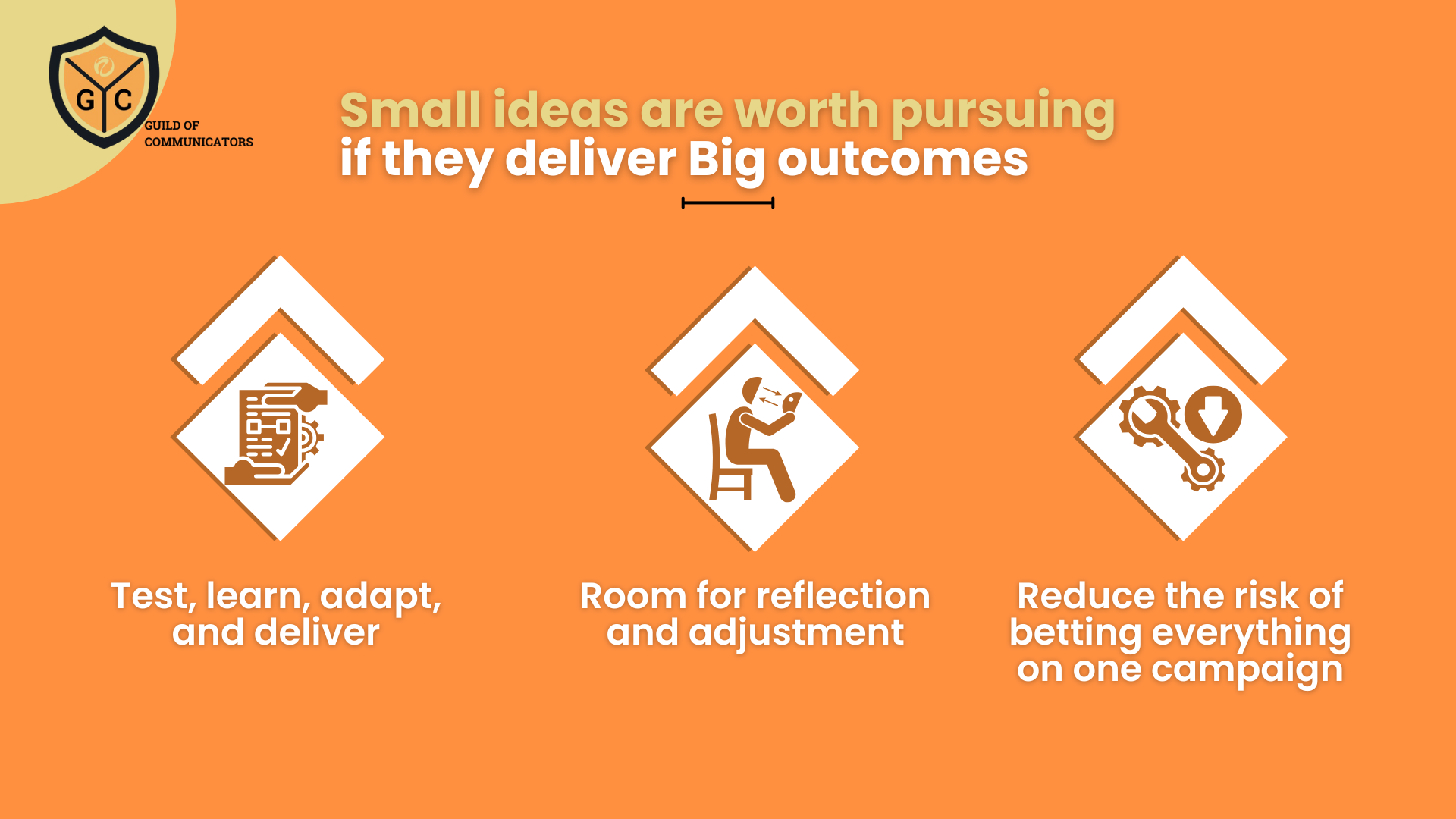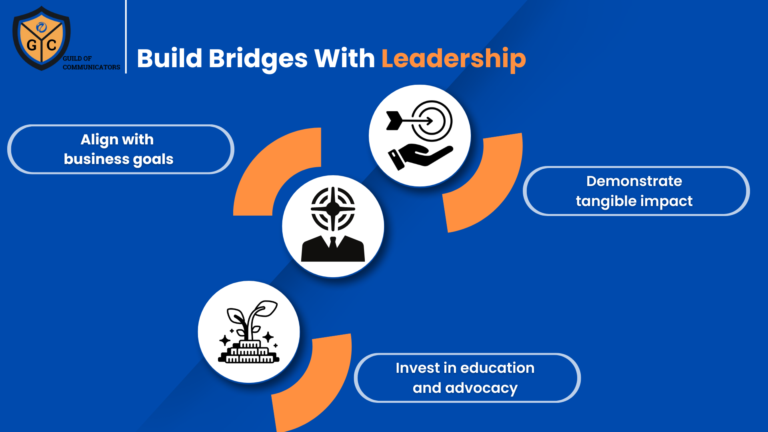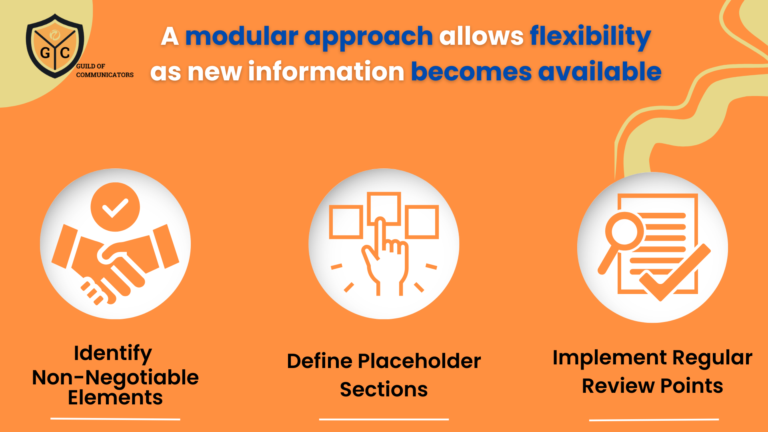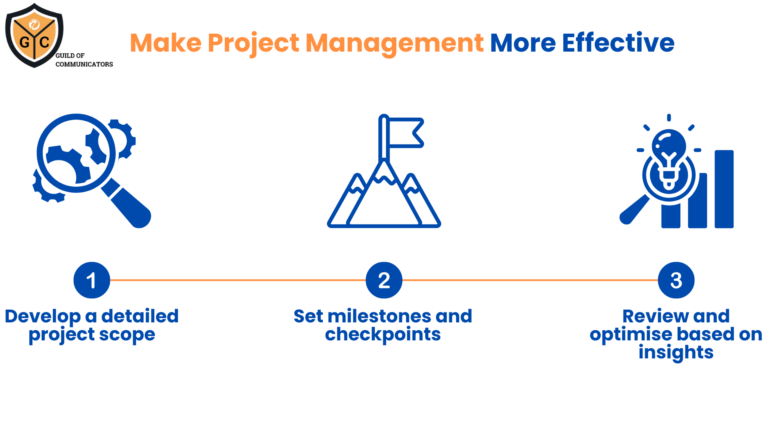In communications, Big Ideas often take centre stage. They are bold, attention-grabbing, and offer the promise of immediate impact. Compared to that, Small Ideas may seem less exciting or even insignificant.
But should they be dismissed so quickly?
For communicators tasked with delivering real outcomes,Small Ideas deserve a second look. When used deliberately, they can be just as strategic and effective as Big Ideas. Sometimes more so.
When Leadership Only Sees What’s Loud
Communicators working under short-term leadership cycles—such as quarterly reviews or stakeholder performance dashboards—may feel pressure to deliver bold, visible campaigns.
Big Ideas appear to match that urgency. Their visibility and measurable short-term reach make them easier to justify in reports and presentations.
In contrast, Small Ideas often look like routine tasks. They do not stand out at first glance. They may not earn much attention in leadership updates, especially if they are seen as part of the day-to-day workflow. This leads to a common issue: strategic value gets overlooked because the tactic does not look strategic.
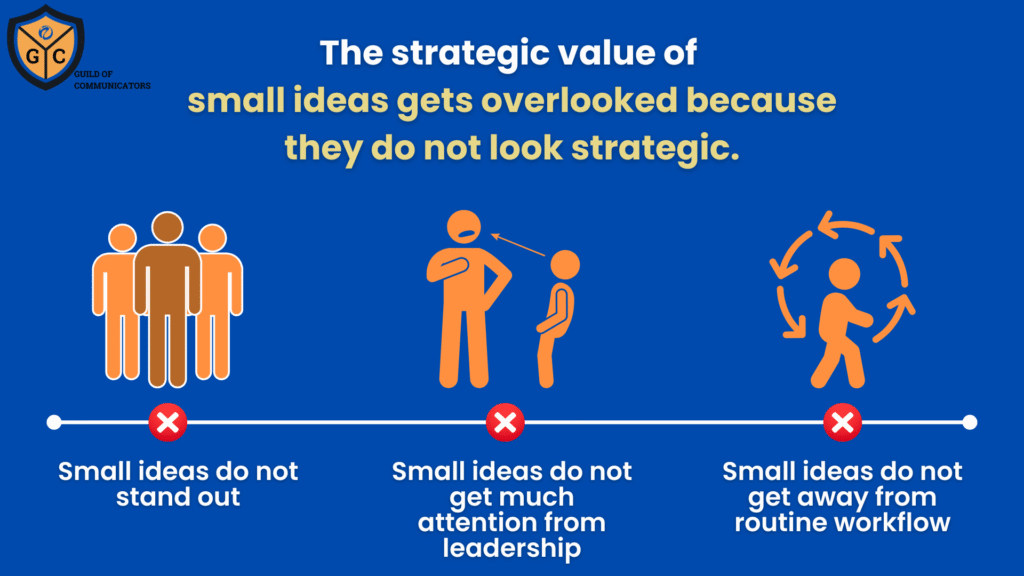
Not Just Tactical Delivery
It becomes harder to inform stakeholders about the contribution of smaller efforts, especially when they are assumed to be standard activities. This perception can reduce leadership’s interest in understanding how those activities contribute to broader goals.
However, Small Ideas should not be dismissed as routine execution. They can be intentional, well-designed, and tested to deliver a specific outcome.
The key is not the scale of the idea—it’s the clarity of purpose behind it.
What Makes a Small Idea Strategic?
Small Ideas are not simply “minor” versions of Big Ideas. The difference lies in scope, purpose, and how they are used.
- A Big Idea typically carries a broad ambition. It aims to shift perception, introduce a new message across channels, or achieve organisation-wide recognition. It often seeks multiple outcomes from a single concept.
- A Small Idea, on the other hand, focuses on one clear task. It might aim to improve a single message, test an audience segment, or validate a new channel before broader adoption.
The value of a Small Idea lies in its precision. It is designed to support learning, support decision-making, or influence outcomes in manageable steps.
Small Ideas can be used to:
- Run a low-risk test of a key message before a larger campaign
- Gather insights on specific audience preferences or behaviours
- Prove the value of a new approach through a contained pilot
This makes Small Ideas a strategic option, especially in fast-moving environments. They enable communicators to build a case for change using evidence, not just assumptions. When used this way, Small Ideas are not just execution—they are part of strategy development.
Playing a Long Game
Communicators aim to build trust and credibility with every project delivered.
That trust is earned not only through high-impact campaigns, but also through consistent alignment with business needs and audience insights.
Relying only on Big Ideas can lead to a situation where expectations are high, but outcomes are unclear. If the idea does not land, or if the outcomes are poorly measured, credibility suffers.
Small Ideas allow for a more reliable approach. Each Small Idea can be tracked, adjusted, and scaled based on what is working. This creates a learning loop, where insights from one effort inform the next. Over time, these efforts compound. The result is not only a better understanding of what works, but also stronger delivery and fewer missteps.
If the aim is to show communications as a trusted partner in decision-making and delivery, Small Ideas help create that picture over time. They show that the communicator is not guessing. They are building something that works.
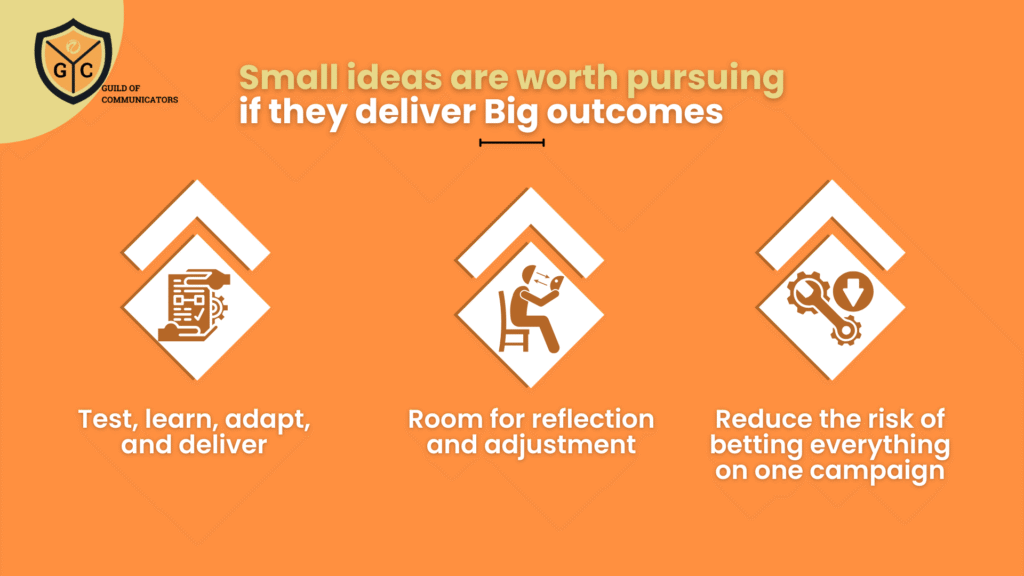
Making Small Ideas Add Up
Communicators must serve the objectives of the organisation. If a series of Small Ideas can achieve outcomes more reliably and with greater learning potential than a single Big Idea, it is worth pursuing.
Small Ideas allow communicators to test, learn, adapt, and deliver. They make room for reflection and adjustment. They reduce the risks that come with betting everything on a single campaign. And when thoughtfully connected, Small Ideas can form the foundation of large, successful programmes.
To make Small Ideas work strategically, you need to design them intentionally.
One way is to view each idea as part of a broader structure: every idea has a defined goal and a clear metric and contributes to a larger programme.
Ask these questions to guide your use of Small Ideas:
- What is the specific objective this idea is meant to support?
- What is the desired behaviour, change, or outcome from this idea?
- What learning or evidence will we get from this idea?
- How does this idea relate to others currently in play?
- How do we sequence or combine this idea with others to form a larger narrative or plan?
Small Ideas are not a compromise. They are a choice. They give communicators the opportunity to test, learn, improve, and deliver real value—often with more agility and less risk.
The key is to treat them with the same discipline as Big Ideas—clear objectives, deliberate planning, and measurable outcomes. When done right, Small Ideas are not small at all. They are how communicators move forward with confidence, purpose, and credibility.
*****
Join the Guild of Communicators at www.gocommunicators.com.
The Guild of Communicators (Go Communicators) stands as the preferred community for communicators seeking to elevate their craft. Through our Academy of Excellence, we provide best-in-class frameworks, fit-for-purpose resources, and opportunities that support members in achieving professional excellence.
We provide the following resources, tools and opportunities to members:
- Best-in-Class Resources: We provide our members with access to frameworks, playbooks and tools that empower them to achieve and maintain professional excellence.
- Continuous Learning and Growth: Through our comprehensive training programmes, workshops, delivered digitally, 24/7 and in-person, we support the ongoing professional development of communicators.
- A Supportive Network: GOC fosters a vibrant community where communicators can connect, collaborate, and support each other, creating a network that champions mutual growth and success.
- Shared Knowledge and Expertise: Our members benefit from the collective wisdom and experience of a diverse group of communication professionals, enhancing their skills and perspectives.
Go Communicators is dedicated to amplifying the impact and value that communicators bring to their organisations, highlighting their crucial role in driving success and growth.
We equip our members with the strategies and tools needed to become influential leaders and business partners within their organisations, enhancing their ability to drive positive change and outcomes.
Through our support and resources, communicators can demonstrate clear, measurable outcomes that showcase their value and impact, reinforcing their importance to their organisations.
Join the Guild of Communicators at www.gocommunicators.com
Subscribe to join over 1500+ communicators and brands getting value every Tuesday while reading A Communicator’s Perspective, our weekly newsletter.

